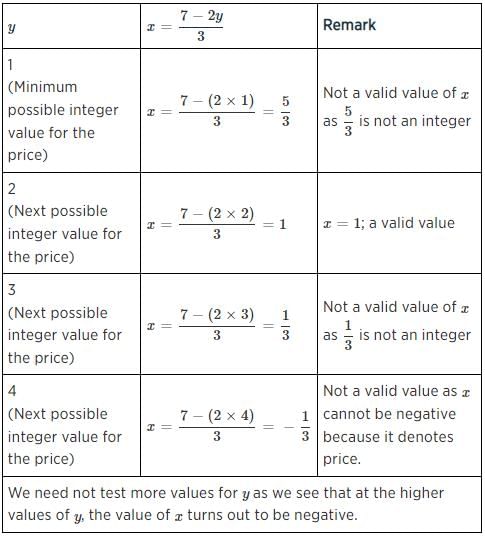Executive Assessment Mock Test - 5 - GMAT MCQ
30 Questions MCQ Test - Executive Assessment Mock Test - 5
At a certain archery school, each of five students fired a single shot at the end of each day of training, as well as one shot before the first day of training. The graph above is a scatterplot, in which each of the 30 points represents the distance from the target that each student hit and the number of days the student had been in training at the time the shot was fired. The solid line is the regression line. Use the dropdown menus to fill in the blanks in each of the following statements based on the information given by the graph.
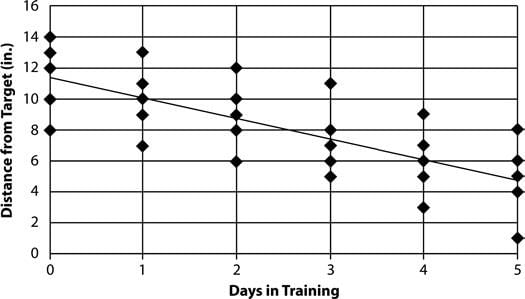
Q. The slope of the regression line is closest to _____.

At a certain archery school, each of five students fired a single shot at the end of each day of training, as well as one shot before the first day of training. The graph above is a scatterplot, in which each of the 30 points represents the distance from the target that each student hit and the number of days the student had been in training at the time the shot was fired. The solid line is the regression line. Use the dropdown menus to fill in the blanks in each of the following statements based on the information given by the graph.
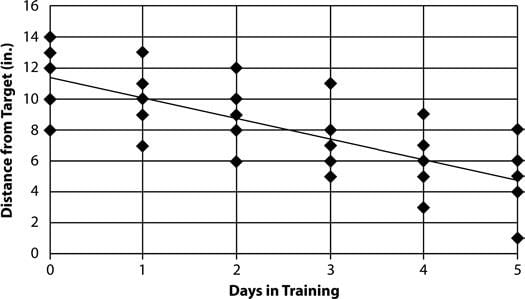
Q. The number of students within 11 in. of the target was _____ after day 2 of training than before any training.

At a certain archery school, each of five students fired a single shot at the end of each day of training, as well as one shot before the first day of training. The graph above is a scatterplot, in which each of the 30 points represents the distance from the target that each student hit and the number of days the student had been in training at the time the shot was fired. The solid line is the regression line. Use the dropdown menus to fill in the blanks in each of the following statements based on the information given by the graph.
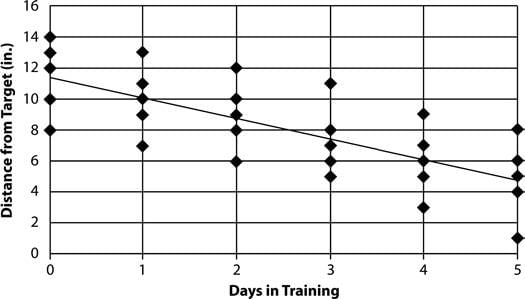
Q. The relationship between the number of days in training and the distance from the target is _____.

XM Representative: The federal committee thoroughly reviews all of the geo-engineering industry’s planned projects and approves only those that meet your guidelines for safety and environmental impact. Since less than two percent of XM projects have ever been rejected, the costly and timeconsuming review should be waived so that our latest project can be quickly passed and implemented.
Committee Member: Your request fails to consider that the decisions of our board affect not only the corporation involved, but also the entire field. If we fail to review your project, we also fail to observe innovations in geoengineering that may need guidelines drafted for the safety of subsequent projects throughout the industry.
In the table below, please identify the additional evidence that most strengthens and the additional evidence that most weakens the committee member’s response to the XM representative.
A: XM’s latest project is nearly identical to a previous project by XM that had successfully passed the committee review process
B: The geo-engineering corporation CL, which is XM’s biggest competitor, has had less than one percent of its projects rejected by the committee
C: Once a geo-engineering innovation has been passed by the committee, the same innovation is automatically approved in all subsequent projects, without further review.
D: Many of XM’s geo-engineering projects are peerreviewed within the industry before they are submitted to the federal committee.
E: Geo-engineering is a hazardous field that deserves careful monitoring.
A group of entomologists estimates that the population of Insect Species X is decreasing at a constant rate of 10% per year, while the population of Insect Species Y is decreasing at a constant rate of 15% per year. Based on these estimates, in four years, the two species will have equal populations, rounded to the nearest million. In the table below, identify a number for the current population of Insect Species X, in millions, and a number for the current population of Insect Species Y, in millions, that could be consistent with the entomologists’ estimates.
Which of these pairs share the same type of relationship?
The table presents quarterly sales and inventory data, in metric tons (MT), for Apex Corporation for a few steel products.
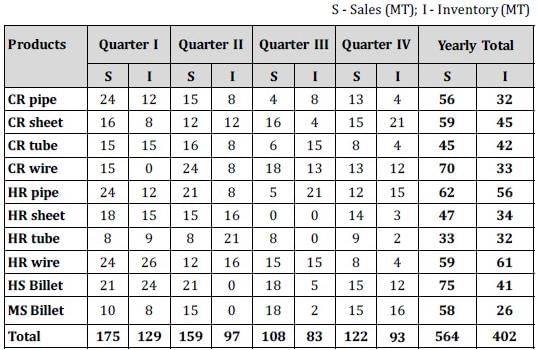
For each of the following statements, select "Yes" if the statement is true based on the information provided; otherwise select "No."
Q. In quarter IV, among all the products, highest sales-to-inventory ratio was observed for HR tubes.
The table presents quarterly sales and inventory data, in metric tons (MT), for Apex Corporation for a few steel products.
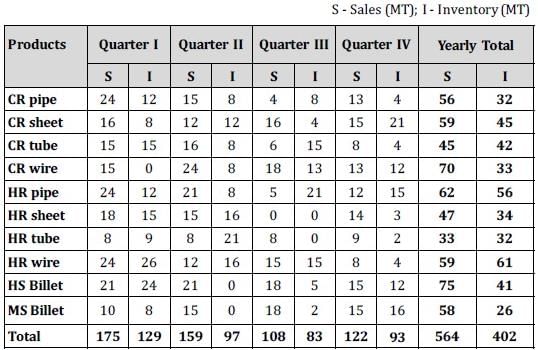
For each of the following statements, select "Yes" if the statement is true based on the information provided; otherwise select "No."
Q. Median sale for quarter I is more than that for each of the other three quarters.
Directions: Read the passage carefully and answer the question as follow.
Shortly after September 11, 2001, the United States began requesting additional financial information about persons of interest by subpoenaing records located at the SWIFT banking consortium. SWIFT, which routes trillions of dollars a day, faced an ethical dilemma: fight the subpoenas in order to protect member privacy and the group's reputation for the highest level of confidentiality, or, comply and provide information about thousands of financial communications in the hope that lives will be saved. SWIFT decided to comply in secret, but in late June 2006, four major U.S. newspapers disclosed SWIFT's compliance. This sparked a heated public debate over the ethics of SWIFT's decision to reveal ostensibly confidential financial communications.
Analyzing the situation in hindsight, three ethical justifications existed for not complying with the Treasury Department's requests. First, SWIFT needed to uphold its long-standing values of confidentiality, non-disclosure, and institutional trust. The second ethical reason against SWIFT's involvement came with inadequate government oversight as the Treasury Department failed to construct necessary safeguards to ensure the privacy of the data. Third, international law must be upheld and one could argue quite strongly that the government's use of data breached some parts of international law.
Although SWIFT executives undoubtedly considered the aforementioned reasons for rejecting the government's subpoena, three ethical justifications for complying existed. First, it could be argued that the program was legal because the United States government possesses the authority to subpoena records stored within its territory and SWIFT maintained many of its records in Virginia. Second, it is entirely possible that complying with the government's subpoena thwarted another catastrophic terrorist attack that would have cost lives and dollars. Third, cooperating with the government did not explicitly violate any SWIFT policies due to the presence of a valid subpoena. However, the extent of cooperation certainly surprised many financial institutions and sparked some outrage and debate within the financial community.
While SWIFT had compelling arguments both for agreeing and refusing to cooperate with the U.S. government program, even in hindsight, it is impossible to judge with certitude the wisdom and ethics of SWIFT's decision to cooperate as we still lack answers to important questions such as: what information did the government want? What promises did the government make about data confidentially? What, if any, potentially impending threats did the government present to justify its need for data?
Q. Which of the following can be inferred from the passage?
Directions: Read the passage carefully and answer the question as follow.
Shortly after September 11, 2001, the United States began requesting additional financial information about persons of interest by subpoenaing records located at the SWIFT banking consortium. SWIFT, which routes trillions of dollars a day, faced an ethical dilemma: fight the subpoenas in order to protect member privacy and the group's reputation for the highest level of confidentiality, or, comply and provide information about thousands of financial communications in the hope that lives will be saved. SWIFT decided to comply in secret, but in late June 2006, four major U.S. newspapers disclosed SWIFT's compliance. This sparked a heated public debate over the ethics of SWIFT's decision to reveal ostensibly confidential financial communications.
Analyzing the situation in hindsight, three ethical justifications existed for not complying with the Treasury Department's requests. First, SWIFT needed to uphold its long-standing values of confidentiality, non-disclosure, and institutional trust. The second ethical reason against SWIFT's involvement came with inadequate government oversight as the Treasury Department failed to construct necessary safeguards to ensure the privacy of the data. Third, international law must be upheld and one could argue quite strongly that the government's use of data breached some parts of international law.
Although SWIFT executives undoubtedly considered the aforementioned reasons for rejecting the government's subpoena, three ethical justifications for complying existed. First, it could be argued that the program was legal because the United States government possesses the authority to subpoena records stored within its territory and SWIFT maintained many of its records in Virginia. Second, it is entirely possible that complying with the government's subpoena thwarted another catastrophic terrorist attack that would have cost lives and dollars. Third, cooperating with the government did not explicitly violate any SWIFT policies due to the presence of a valid subpoena. However, the extent of cooperation certainly surprised many financial institutions and sparked some outrage and debate within the financial community.
While SWIFT had compelling arguments both for agreeing and refusing to cooperate with the U.S. government program, even in hindsight, it is impossible to judge with certitude the wisdom and ethics of SWIFT's decision to cooperate as we still lack answers to important questions such as: what information did the government want? What promises did the government make about data confidentially? What, if any, potentially impending threats did the government present to justify its need for data?
Q. Inferring from the passage, which of the following constituted an ethical justification for SWIFT complying with the government?
Based upon the results of a recent study, the net value of assets held by young adults or for the benefit of young adults exceeds the net value of assets held by middle-age working professionals with children. The common notion that young adults or so-called "twenty somethings" are bigger spenders and smaller savers than middle-age adults is, therefore, false.
Q. The argument is primarily flawed for which of the following reasons?
Samuel is obviously a bad fisherman. During the past season, in which he and the five members of his team spent four months on a boat together off Dutch Harbor, AK, he caught fewer fish than any of his teammates.
Q. Which of the following, if true, most weakens the argument above?
Wine Company Representative: The corks of red wine bottles pose a threat to the environment because they are treated with chemicals that are especially toxic in landfills. However, the new cork that our company developed, which will be adopted by the entire red wine industry, represents a solution. Since the new cork is natural and not treated with chemicals, when the industry completes its transition to the new cork, there will no longer be any threat to landfills from red wine corks.
Q. Which of the following, if true, most weakens the argument above?
World War II, which resulted in the death of over 70 million individuals, proved to be the deadliest conflict in human history, claiming nearly twice as many lives than would be killed in World War I.
With the advent of YouTube, Facebook, and Flickr, many savvy political consultants undertook revolutionary micro-targeting and get-out-the-vote techniques that enabled political candidates with cash-strapped budgets to be able to reach numerous likely voters and succeed in raising large numbers of money from enthusiastic and committed supporters in a short period of time.
After years of working on Wall Street, an apartment in lower Manhattan still felt like his home for famed investment banker John E. Callan, even though he also owned a house in Rye and in East Hampton.
Considered to be one of the brightest upcoming legal scholars, Douglas Kysar has written countless articles on environmental law and policy; his writings, which include a book with renowned law professor Daniel Esty, is cited more often than most other young legal scholars.
Unlike the team of lawyers working for the petitioner, whose argument rested on a questionable interpretation of a bill that only recently passed Congress, the government's argument centered on what many legal experts consider a main-stream interpretation of the Bill of Rights.
If the average (arithmetic mean) of 5 numbers j, j + 5, 2j - 1, 4j -2, and 5j- 1 is 8, what is the value of j?
Guadalupe owns 2 rectangular tracts of land. One is 300 m by 500 m and the other is 250 m by 630 m. The combined area of these 2 tracts is how many square meters?
There are five sales agents in a certain real estate office. One month Andy sold twice as many properties as Ellen, Bob sold 3 more than Ellen, Cary sold twice as many as Bob, and Dora sold as many as Bob and Ellen together. Who sold the most properties that month?
In a field day at a school, each child who competed in n events and scored a total of ρ points was given an overall score of (ρ/n) + n. Andrew competed in 1 event and scored 9 points. Jason competed in 3 events and scored 5, 6, and 7 points, respectively. What was the ratio of Andrew's overall score to Jason's overall score?
A certain work plan for September requires that a work team, working every day, produce an average of 200 items per day. For the first half of the month, the team produced an average of 150 items per day. How many items per day must the team average during the second half of the month ifitis to attain the average daily production rate required by the work plan?
If no bulk purchase discount applies, what is the price of 13 oranges and 12 apples?
(1) The price of 39 oranges and 36 apples is $111.
(2) The price of 3 oranges and 2 apples is $7.
What is the price of an orange?
(1) The price of 3 oranges and 2 apples is $7.
(2) The price of an orange and the price of an apple are both integers.
A trader purchased three products - Product X, Product Y, and Product Z - for a sum of $500,000. Did the trader pay more than $200,000 for Product Z?
(1) The sum the trader paid for Product X and Product Y combined was 3 times the sum the trader paid for Product X.
(2) The trader paid more to purchase Product Z than to purchase Product Y.
A teacher distributed pens, pencils, and erasers among the students of his class, such that all students got an equal number of pens, an equal number of pencils, and an equal number of erasers. If no pens, pencils, or erasers remained with the teacher, how many students were in the class?
(1) Each student got pens, pencils, and erasers in the ratio 3:4:5, respectively.
(2) The teacher distributed a total of 27 pens, 36 pencils, and 45 erasers.
If neither x nor y is equal to 0, is 3x − 2y = 0?
(1) 27x3 − 8y3 = 0
(2) 9x2 − 4y2 = 0





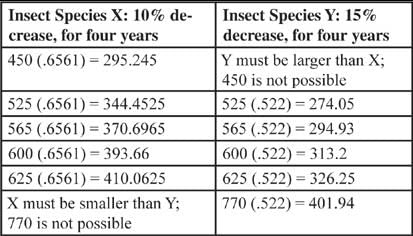
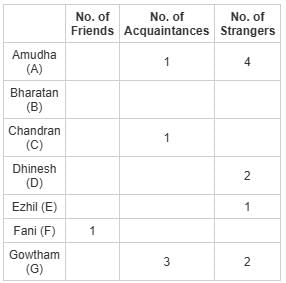
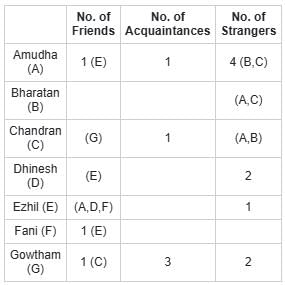
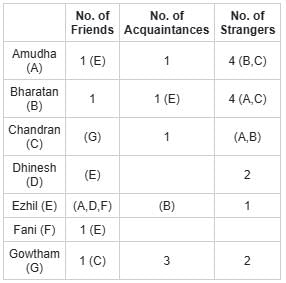
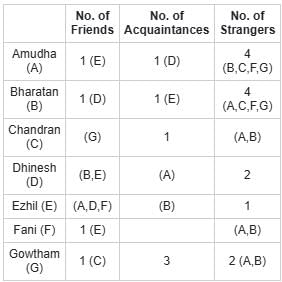
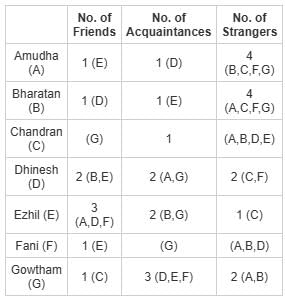
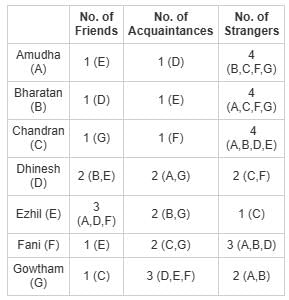
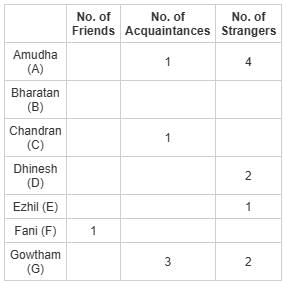
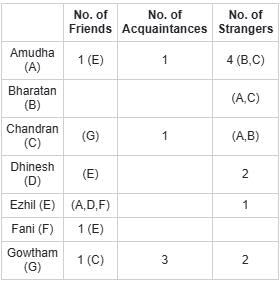
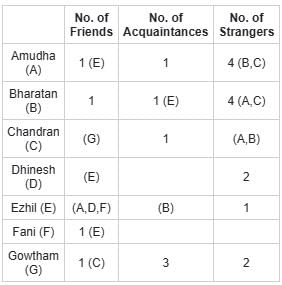
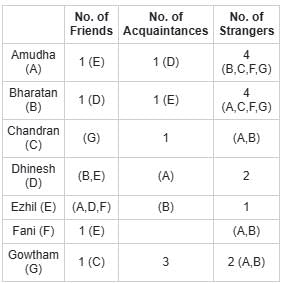
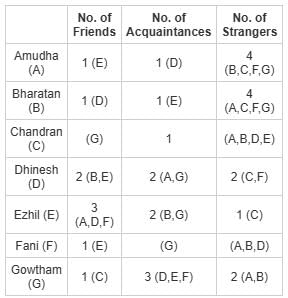
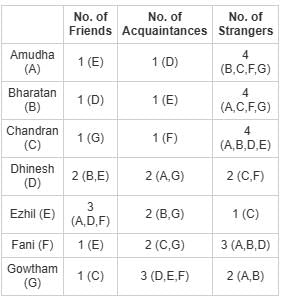



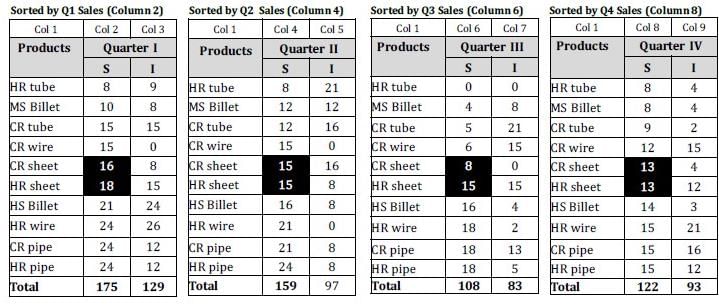
 term
term product = value of the 5.5th product.
product = value of the 5.5th product.

